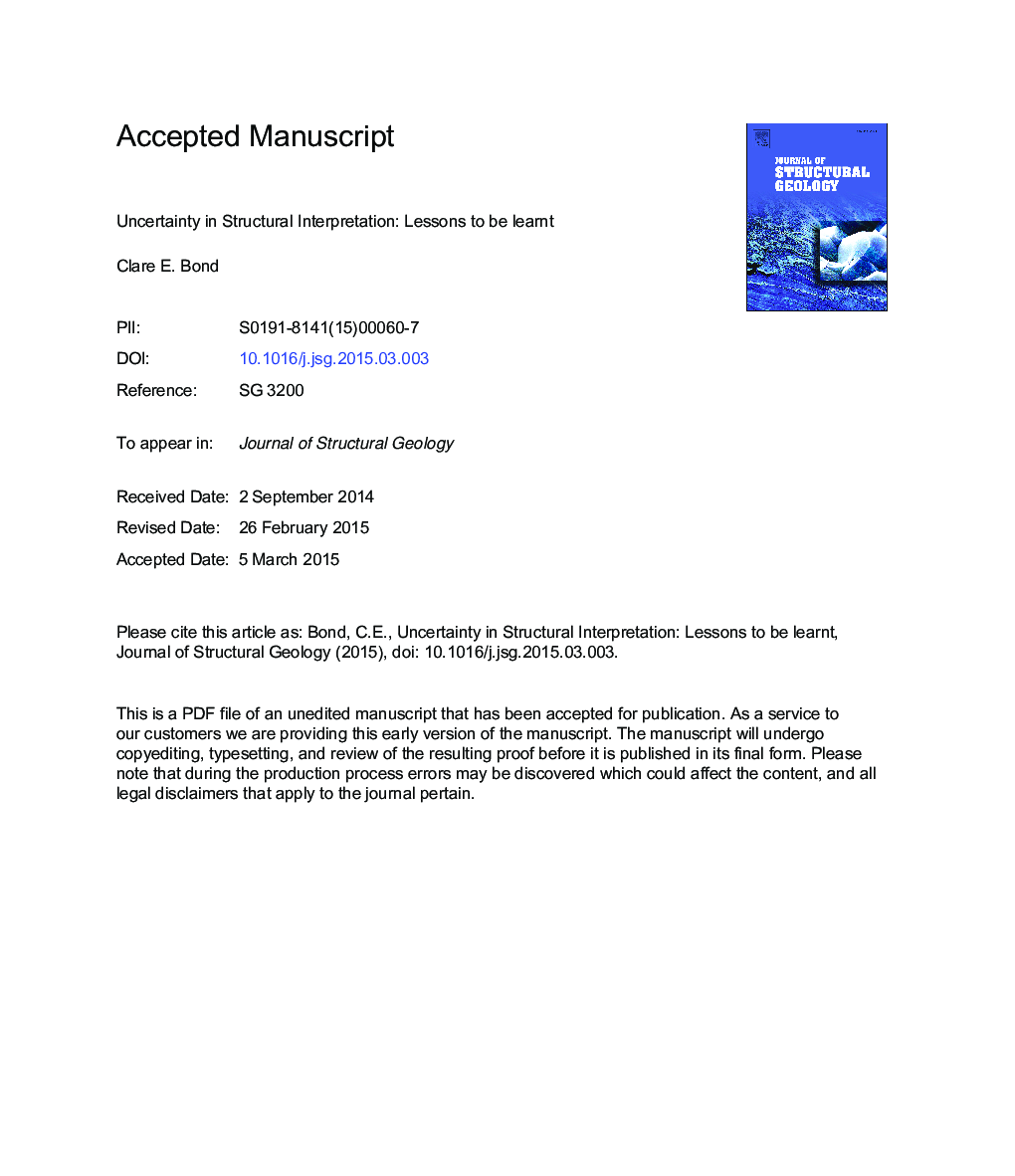| کد مقاله | کد نشریه | سال انتشار | مقاله انگلیسی | نسخه تمام متن |
|---|---|---|---|---|
| 6444726 | 1640506 | 2015 | 72 صفحه PDF | دانلود رایگان |
عنوان انگلیسی مقاله ISI
Uncertainty in structural interpretation: Lessons to be learnt
ترجمه فارسی عنوان
عدم قطعیت در تفسیر ساختاری: درس هایی که باید یاد بگیرند
دانلود مقاله + سفارش ترجمه
دانلود مقاله ISI انگلیسی
رایگان برای ایرانیان
کلمات کلیدی
عدم قطعیت، تفسیر، ساختار، مدل ها،
ترجمه چکیده
عدم قطعیت در تفسیر داده های زمین شناسی، یک عنصر ذاتی زمین شناسی است. مجموعه داده ها از منابع مختلف: تصاویر لرزه ای از طریق سنجی از راه دور، داده های میدانی و داده های گمانه ها اغلب برای ساختن مدل زمین شناسی زیر سطحی تلفیق و تفسیر می شوند. داده ها دارای وضوح محدود و توزیع فضایی هستند که منجر به عدم اطمینان در تفسیر داده ها و مدل های بعدی زمین شناسی شده می شود. روش ها برای تعیین میزان عدم قطعیت تفسیری یک مجموعه داده، چگونگی ضبط و بیان عدم قطعیت و بررسی عدم قطعیت از نظر ریسک مورد بررسی قرار گرفته است. در اینجا من بررسی کار انجام شده و بحث در مورد بهترین روش حسابداری برای عدم قطعیت در جریان کار ساختار تفسیر ساختاری. موانع به کار بردن بهترین راه حل، شامل استفاده از بسته های نرم افزاری برای تفسیر است. شواهد تجربی نشان می دهد که به حداقل رساندن خطای تفسیر از طریق استفاده از استدلال زمین شناسی و قوانین می تواند به کاهش عدم قطعیت تفسیر کمک کند؛ از طریق شناسایی تفسیر غیر قابل قبول و در برجسته کردن زمینه های عدم قطعیت. درک فرآیندهای تفکر کارشناسانه و استدلال، از جمله استفاده از مهارت های فضایی، در طول تفسیر ممکن است در شناسایی نامطلوب و در آموزش علوم زمینی جدید کمک کند.
موضوعات مرتبط
مهندسی و علوم پایه
علوم زمین و سیارات
زمین شناسی
چکیده انگلیسی
Uncertainty in the interpretation of geological data is an inherent element of geology. Datasets from different sources: remotely sensed seismic imagery, field data and borehole data, are often combined and interpreted to create a geological model of the sub-surface. The data have limited resolution and spatial distribution that results in uncertainty in the interpretation of the data and in the subsequent geological model(s) created. Methods to determine the extent of interpretational uncertainty of a dataset, how to capture and express that uncertainty, and consideration of uncertainties in terms of risk have been investigated. Here I review the work that has taken place and discuss best practice in accounting for uncertainties in structural interpretation workflows. Barriers to best practice are reflected on, including the use of software packages for interpretation. Experimental evidence suggests that minimising interpretation error through the use of geological reasoning and rules can help decrease interpretation uncertainty; through identification of inadmissible interpretations and in highlighting areas of uncertainty. Understanding expert thought processes and reasoning, including the use of visuospatial skills, during interpretation may aid in the identification of uncertainties, and in the education of new geoscientists.
ناشر
Database: Elsevier - ScienceDirect (ساینس دایرکت)
Journal: Journal of Structural Geology - Volume 74, May 2015, Pages 185-200
Journal: Journal of Structural Geology - Volume 74, May 2015, Pages 185-200
نویسندگان
Clare E. Bond,
